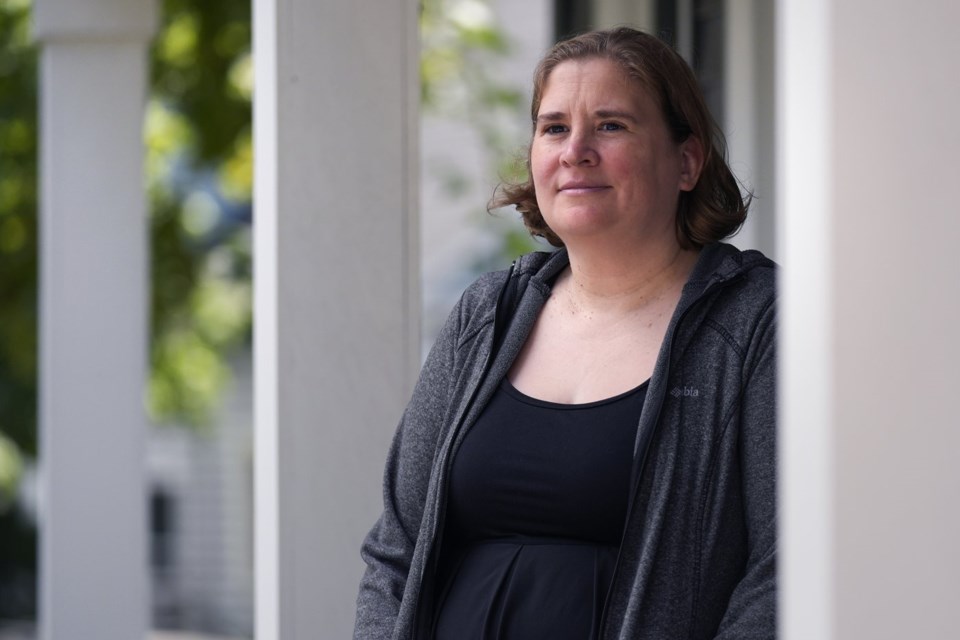NEW YORK (AP) ŌĆö Single mother Rebecca Wood, 45, was already dealing with high medical bills in 2020 when she noticed she was being charged a $2.49 ŌĆ£program feeŌĆØ each time she loaded money onto her daughterŌĆÖs school lunch account.
As more schools turn to cashless payment systems, more districts have contracted with processing companies that charge as much as $3.25 or 4% to 5% per transaction, according to a new report from the Consumer Financial Protection Bureau. The report found that though legally schools must offer a fee-free option to pay by cash or check, thereŌĆÖs rarely transparency around it.
ŌĆ£It wouldnŌĆÖt have been a big deal if I had hundreds of dollars to dump into her account at the beginning of the year,ŌĆØ Wood said. ŌĆ£I didnŌĆÖt. I was paying as I went, which meant I was paying a fee every time. The $2.50 transaction fee was the price of a lunch. So IŌĆÖd pay for six lunches, but only get five.ŌĆØ
The U.S. Department of Agriculture, which oversees the federal policy on fee-free school lunch, has mandated that districts inform families of their options since 2017, but even when parents are aware, having to pay by cash or check to avoid fees can be burdensome.
ŌĆ£ItŌĆÖs just massively inconvenient,ŌĆØ said Joanna Roa, 43, who works at Clemson University in South Carolina as a library specialist and has two school-aged children.
Roa said that when her son was in first grade and she saw the $3.25-per-transaction fee for lunch account transactions, she and her husband decided to send him to school with packed lunches instead.
ŌĆ£A dollar here and there, I expected,ŌĆØ she said. ŌĆ£But $3.25 per transaction, especially here in rural South Carolina where the cost of living is a lot lower ŌĆö as are the salaries ŌĆö is a lot.ŌĆØ
Roa said packing lunch for two kids every day, for two working parents, was an increased burden of time and effort. For the past two years, thanks to surplus funds, her school district has been providing free lunches in school, which has changed the equation, but Roa said that could end at any point.
In its review of the 300 largest public school districts in the U.S., the CFPB found that 87% of sampled districts contract with payment processors.
Within those districts, the companies charge an average of $2.37 or 4.4% of the total transaction, each time money is added to a childŌĆÖs account. For families with lower incomes who canŌĆÖt afford to load large sums in one go, those fees can hit weekly or even more frequently, increasing costs disproportionately. Families that qualify for free or reduced lunch pay as much as 60 cents per dollar in fees when paying for school lunches electronically, according to the report.
In WoodŌĆÖs case, she researched the fees and learned about the USDA requirement to offer fee-free payment by cash or by check. When she pointed this out to the superintendent of her daughterŌĆÖs Massachusetts school district, the administrator said the lack of transparency was an oversight. To protest, Wood had planned to pay for her daughterŌĆÖs lunches in coins at the school office, together with other parents. But then the pandemic hit, changing, among other things, school lunch policy.
In subsequent years, Wood became part of a campaign that successfully pushed for universal free school lunches in the state, but she continues to protest school processing fees for families.
ŌĆ£Even if lunch itself is free, if you want to buy something a la carte, or an extra lunch, or some other transaction, you still have to pay that fee,ŌĆØ Wood said. ŌĆ£They take money from people who need it the most.ŌĆØ
While payment companies maintain that school districts have the chance to negotiate fees and rates when they form their contracts, the CFPB found that complex company structures ŌĆ£may insulate companies from competition and make school districts less likely to negotiate.ŌĆØ Just three companies ŌĆö MySchoolBucks, SchoolCafe, and LINQ sa╣·╝╩┤½├Į ŌĆö dominate the market, according to the report.
Without the ability to choose which company to work with, ŌĆ£families have fewer ways to avoid harmful practices,ŌĆØ the agency said, ŌĆ£including those that may violate federal consumer protection law.ŌĆØ
The companies named in the report did not respond to requests for comment.
IŌĆÖm a parent facing these fees. What can I do?
Know that you always have a right to pay by cash or check, under federal policy. You can also request that your school district negotiate down the fees with their payment processing company, or request that the district cover the fees directly, which can give them leverage in negotiating a contract.
If your school is located in a low-income area, you may also check whether your district qualifies for the , which would allow the school to provide free breakfast and lunch to all enrolled students. More information on the CEP is available at the .
___
The Associated Press receives support from Charles Schwab Foundation for educational and explanatory reporting to improve financial literacy. The independent foundation is separate from Charles Schwab and Co. Inc. The AP is solely responsible for its journalism.
Cora Lewis, The Associated Press



